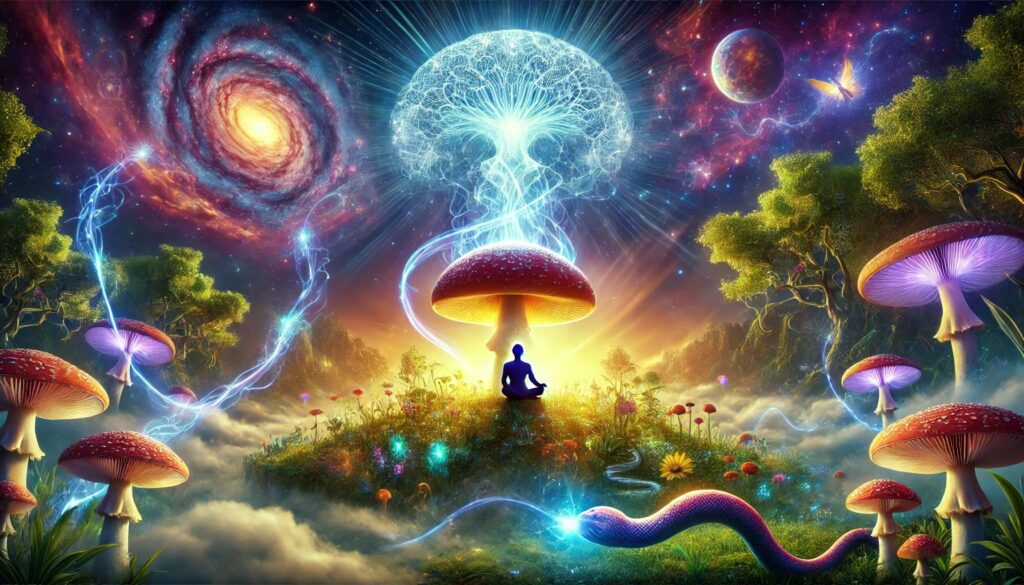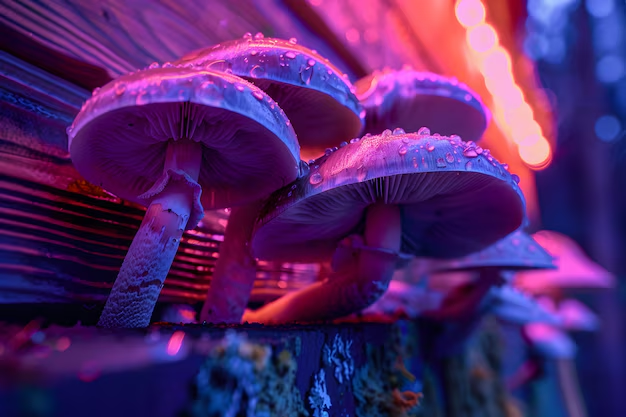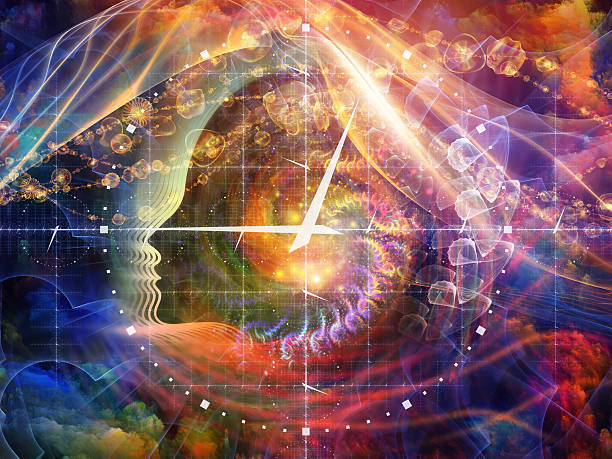
It’s essential to understand the importance of waiting between psilocybin mushroom trips. So let’s explore the reasons behind taking breaks, how long you should wait, and the science supporting this approach.
Understanding Psilocybin and Its Effects
Psilocybin is a naturally occurring psychedelic compound found in certain types of mushrooms. When ingested, psilocybin is converted into psilocin, which interacts with serotonin receptors in the brain, particularly the 5-HT2A receptor. This interaction leads to altered perceptions, mood changes, and profound shifts in consciousness. The effects of psilocybin can vary greatly depending on the dosage, individual differences, and the setting in which it is consumed.
The Therapeutic Potential of Psilocybin
Recent research has highlighted psilocybin’s potential in treating a range of mental health conditions, including depression, anxiety, PTSD, and addiction. Clinical trials have shown promising results, with participants reporting significant improvements in their symptoms and overall well-being. However, these therapeutic benefits are most effectively realized when psilocybin is used responsibly and with appropriate intervals between sessions.
Why Wait Between Psilocybin Mushroom Trips?

If the science and anecdotal evidence for holistic benefit aren’t necessarily “your thing,” it’s still advisable to take the following into consideration.
1. Tolerance Buildup
One of the primary reasons to wait between psilocybin mushroom trips is to prevent tolerance buildup. Tolerance occurs when the body becomes less responsive to a substance after repeated use. With psilocybin, tolerance develops quickly; even after a single use, your body requires a higher dose to achieve the same effects if taken again too soon.
Studies have shown that the 5-HT2A receptors downregulate rapidly with repeated exposure to psilocybin, meaning they become less sensitive. This downregulation can diminish the subjective effects and therapeutic benefits of psilocybin. Waiting for these receptors to return to their baseline sensitivity is crucial for maximizing the efficacy of subsequent trips.
2. Psychological Integration
Psilocybin experiences can be intense and emotionally charged. They often bring to the surface deep-seated emotions, memories, and insights. Integrating these experiences into daily life is a critical aspect of the therapeutic process. Integration involves reflecting on the insights gained during the trip, processing emotions, and making positive changes based on these insights.
Taking time between trips allows individuals to fully process and incorporate their experiences, leading to more meaningful and lasting changes.
3. Enhancing Neuroplasticity
Psilocybin has been shown to promote neuroplasticity, which is the brain’s ability to reorganize itself by forming new neural connections. This neuroplasticity is believed to underlie many of the therapeutic benefits of psilocybin, such as improved mood, reduced anxiety, and enhanced creativity.
However, the brain needs time to consolidate these changes. Frequent use of psilocybin without adequate breaks may interfere with this process, potentially reducing the long-term benefits. Allowing time between trips supports the brain’s natural healing and growth processes.
How Long Should You Wait Between Psilocybin Mushroom Trips?

In truth, there’s no definitive answer. The optimal waiting period between psilocybin trips can vary depending on individual factors and the goals of the psychedelic experience. However, general guidelines suggest waiting at least two weeks to a month between trips. This timeframe allows for tolerance to decrease, integration of the experience, and the brain to recover and consolidate neuroplastic changes. If your friends can’t wait, that’s fine. You’ve got to look out for number one afterall…
Research Supporting Waiting Periods
Scientific research supports the importance of waiting between psilocybin trips. A study found that tolerance to psilocybin develops rapidly, with participants showing significantly reduced effects when administered psilocybin again after only 24 hours. The study suggests that waiting several days to weeks is necessary to restore sensitivity to psilocybin’s effects.
Another study published highlighted the importance of receptor recovery in psychedelic therapy. The researchers emphasized that adequate spacing between sessions is crucial for maintaining the therapeutic efficacy of psychedelics like psilocybin.

If you want to be smart and thorough in your journeying, it’s always good to be aware of measures for preventing harm reduction.
1. Set Clear Intentions
Before each psilocybin trip, set clear intentions for what you hope to achieve or explore. This intentional approach can guide the experience and make the integration process more focused and meaningful.
2. Create a Supportive Environment
Ensure that you are in a safe, comfortable, and supportive environment for your psychedelic journey. Having a trusted friend or sitter present can provide reassurance and help manage any challenging moments.
3. Practice Self-Care
In the days and weeks following a psilocybin trip, prioritize self-care activities such as meditation, journaling, exercise, and spending time in nature. These practices can support the integration process and promote overall well-being.
Conclusion

Whether you personally consider using psilocybin mushrooms as a powerful tool for personal growth, healing, and self-discovery, or you just like they way they make you feel, to maximize the benefits and ensure personal safety, it’s essential to adopt a harm reduction approach, which includes waiting adequate periods between trips. By understanding the importance of tolerance, integration, and neuroplasticity, individuals can make informed decisions about their psychedelic use and optimize their experiences for long-lasting positive effects.
The journey with psychedelics is not just about the trip itself but also about how you integrate and embody the insights gained, if you’re even finding that you’ve retained insights.





